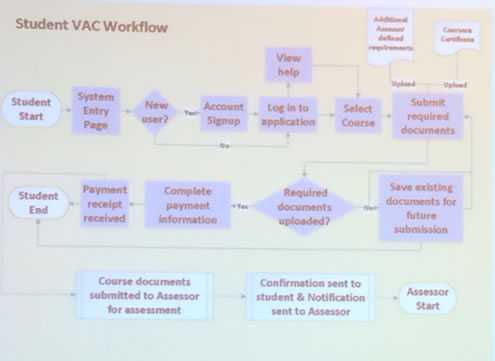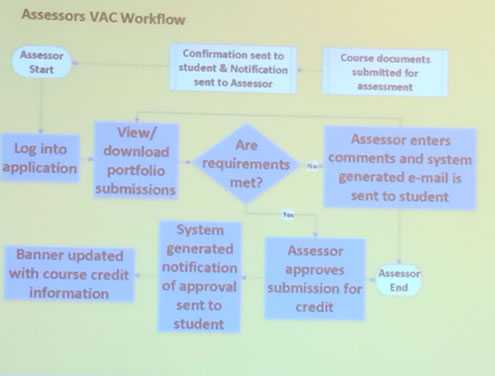CIOs, IT leaders say the key to expanding online is knowing your goals and vision
 By now, most colleges and universities know that providing some type of online program—fully online, MOOCs, or blended learning—is critical to staying current in today’s changing higher ed landscape. But how do you determine your institution’s online readiness, and how can MOOCs work for everyone?
By now, most colleges and universities know that providing some type of online program—fully online, MOOCs, or blended learning—is critical to staying current in today’s changing higher ed landscape. But how do you determine your institution’s online readiness, and how can MOOCs work for everyone?
According to Elke Leeds, assistant vice president for Technology Enhanced Learning and executive director of the Distance Learning Center at Kennesaw State University, the one question all institutions must first ask themselves is: “Why would we want to do this?”
“We’re not Harvard or MIT, we’re a teaching-focused state university that produces teachers, nurses and business school grads; we don’t have classes like ‘Advanced computer analytics programming,’” Leeds explained. “So the questions that became most important to us were: ‘What is the value proposition, and what kind of MOOC is right for us?’”
For Kennesaw, the value was in most institutions’ perceived values of offering a MOOC, such as increasing enrollment, strengthening brand, increasing community engagement, promoting lifelong learning, and promoting higher education relevance.
But the course had to fit, and so did the goal of the MOOC.
“We’re credentialing-based and degree-based. We believe in offering at least the option of credentials, or peer review, so we had to devise a way to do just that with our first MOOC, ‘K-12 Blended and Online Learning.’”
(Next page: Designing a MOOC for all learners)
According to Leeds, the process of designing the university’s first MOOC began with asking faculty why they wanted to create a MOOC, requiring a rigorous curriculum, and requiring an assessment system with authentication.
“For faculty it was almost like an RFP for MOOCs,” she said.
Leeds and her team chose K-12 Online and Blended Learning because it benefited these areas:
- Industry: K-12 is experiencing huge growth in online and blended learning
- Employer: Thanks to the economic downturn, employers are often looking for teachers who embody these skill sets
- Learner and faculty: Students are interested in the topic and faculty currently provides a great course
- Authority: The course was approved by PSC and PLUs.
- University and college: The course could be used as an elective in four different M.Ed grad programs
“In order to have the attendee receive optional credits, we needed to have the same learning objectives and curriculum and assessment standards as our online learning courses, and here’s the thing: The term MOOC sounds cool and new, but aren’t we already doing this with online learning?” asked Leeds.
To take the vision to reality, Leeds asked Lectra Lawhorne, executive director of IT Services, to build a Virtual Assessment Center (VAC) for students and faculty, which includes a weekly reporting component to department heads and the registrar.
Here’s what the VAC process looks like for students:
For faculty:
The VAC’s technical components include: ASP, Javascript/JSON-P/AJAX, VBScript, SQL, and XML. Future technical phases and considerations include banner SIS integration automation, automation of email validation for LDAP Account setup, leveraging SlimCD reporting API for more integrated report generation, and additional MOOCS for 2015.
Leeds also emphasized that knowing how the MOOC could potentially generate revenue is critical, as well as planning ahead.
“We figured we’d need about 1,500 students to enroll in the course with about 4 students enrolling in the university at the end, since the total cost of this MOOC was roughly $20K. What we had was around 9,000 students enroll, with 12 portfolios evaluated for credit at $250/review and 7 students enrolling in the university, so we definitely saw a return,” explained Leeds.
(Next page: Are you ready for an online program?)
Another session presenter, Luis Llorens, professor at the University of Baja California, Mexico, mirrored the emphasis of Leeds when he explained that the first question every institution needs to ask when contemplating online readiness is: What is the core mission of the university?
“This is the elephant in the room that universities don’t want to address,” he said. “The online program or course has to fit with the institution’s mission and those developing the program or course need to have a plan or list of everything they need to complete the program to present to the university before anything begins.”
Llorens coordinated the Center for Open Education (CEA) UABC, which is an interdisciplinary group of teachers from different departments that come together to produce research and practical steps for innovation in teaching models, diversifying face-to-face learning and other IT projects.
“I can’t stress enough how important collaboration is, and having everyone be equal in the group regardless of institutional hierarchy, in planning and developing innovations on campus,” said Llorens.
According to Llorens, the first step in assessing institutional readiness for implementing an online program is making sure that the deans and admins requesting the program know the mission of the university and the goal of the program.
“To help them with this, we created, with our startup mentality at CEA, an instrument to gather information about the expertise and resources needed to create such a program. The instrument includes 70 indicators allocated in 23 IT, educational, and organizational standards,” he clarified.
The information part of this instrument was aggregated by focus groups in technology, education, and organization across campus, then all information data was analyzed and put into one comprehensive presentation to the Dean.
Data included everything from the Wi-Fi capabilities and technical solutions needed, to best practices from teachers and suggestions from students.
For more information on the CEA and Llorens’ implementation strategy, contact him at luis.llorens@uabc.edu.mx
- 25 education trends for 2018 - January 1, 2018
- IT #1: 6 essential technologies on the higher ed horizon - December 27, 2017
- #3: 3 big ways today’s college students are different from just a decade ago - December 27, 2017



